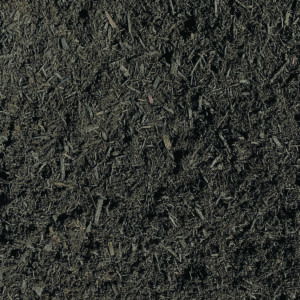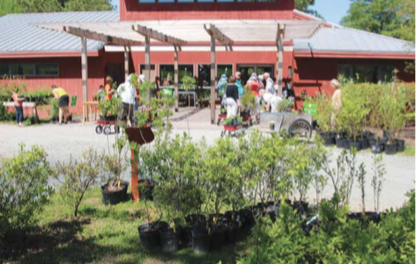
Mulch can help cut down on evaporation. It not only holds moisture in but helps moderate soil temperature.
You know your garden is in trouble when the forecast is for rain, but all the storms seem to skip over your area entirely.
According to plantmaps.com, as of mid-July, 16 percent of the United States is under drought conditions and 25 percent is “abnormally dry.”
Much of the East Coast as far west as Memphis is in various stages of too dry. More than 42% of Maryland is under drought conditions, with extreme drought in Allegany County.
Much of Delaware is abnormally dry with no official drought areas, but some residents would argue that point.
Yes, there has been rain, even flooding, but a heavy downpour doesn’t make up for weeks without rain, since much of it runs off rather than soaking in.
A lot of rain in one day just messes up the statistics, making it look like an area has had “normal” total rainfall for the year.
Tracy Wooten, Extension horticulture agent in Sussex County, Delaware, declared in early July that non-irrigated corn was “gone.” The damage to landscape plants is not so easily diagnosed.
Drought has both short- and long-term effect on plants.
Grasses, including corn and wheat, show the impact of topsoil moisture depletion first because of their shallow roots. On plants with deeper roots, leaves curl, wilt or turn brown. Some may drop prematurely.
When soil is too dry, roots can lose water through reverse osmosis.
Delicate root hairs of a tree or shrub, which are present in the top 15 inches of soil and are responsible for the bulk of water uptake, die. The plant cannot take up water. Photosynthesis is challenged.
Long-term effects include dieback of branches, even death of the plant. Dead leaves may remain on the tree, especially on oaks and other deciduous trees.
A stressed plant is more susceptible to disease, including root rots, cankers, wood rots and wilt.
Drought-stressed trees are often invaded by wood-boring insects such as birch borer, black stem borer and other bark beetles.
Scientists say we can expect more drought with climate change, but that’s no reason to give up gardening altogether. We just need to garden smarter.
One way to do that is to amend your soil. Compost and organic matter helps retain moisture.
Mulch helps cut down on evaporation. It not only holds moisture in but helps moderate soil temperature.
This is not true for rocks used as mulch; they can increase the heat. Organic material is better — but not more than 4 inches. Please, no mulch volcanoes!
Don’t fertilize in the summer, especially in a drought. Fertilization encourages new green growth, which requires more water. Stressed plants do not need fertilizer.
Minimize summer pruning, which also encourages new green growth.
Keep beds weeded. Weeds compete with your desirable plants for water.
Reduce the amount of lawn area.
Hand water or use a soaker hose.
Overhead sprinklers can lose half the water they’re putting out to evaporation before the water reaches the ground.
Deep, infrequent soaking is the most efficient way to water.
Rather than worry about the grass, most of which is a cool-season variety in this area anyway and would naturally turn brown, concentrate on valuable trees and shrubs. Water early in the morning.
Collect and store rain water in a rain barrel, or at least direct runoff from your roof into a garden area.
Don’t feel guilty about trying to save your landscape plants during a drought with minimal watering rather than allowing them to die.
A University of Delaware publication, Dealing with Drought (www.udel.edu/academics/colleges/canr/cooperative-extension/fact-sheets/dealing-with-drought/), notes it is less expensive economically and environmentally to maintain those plants than to replace them later, which will require much more water to reestablish than maintaining what you have.
Finally, now is not a good time for planting, but when you are ready to plant again, search for drought-tolerant plants.
Choose the right plants for the right place, and group together plants with similar water needs.




